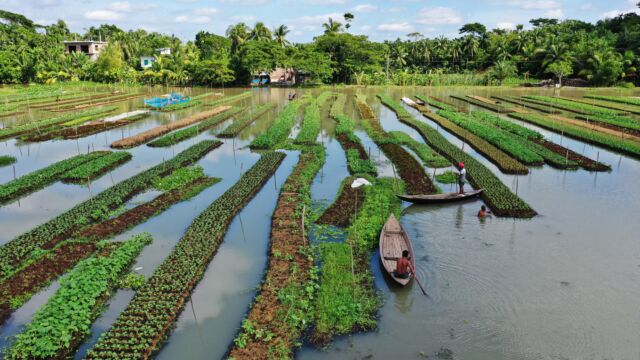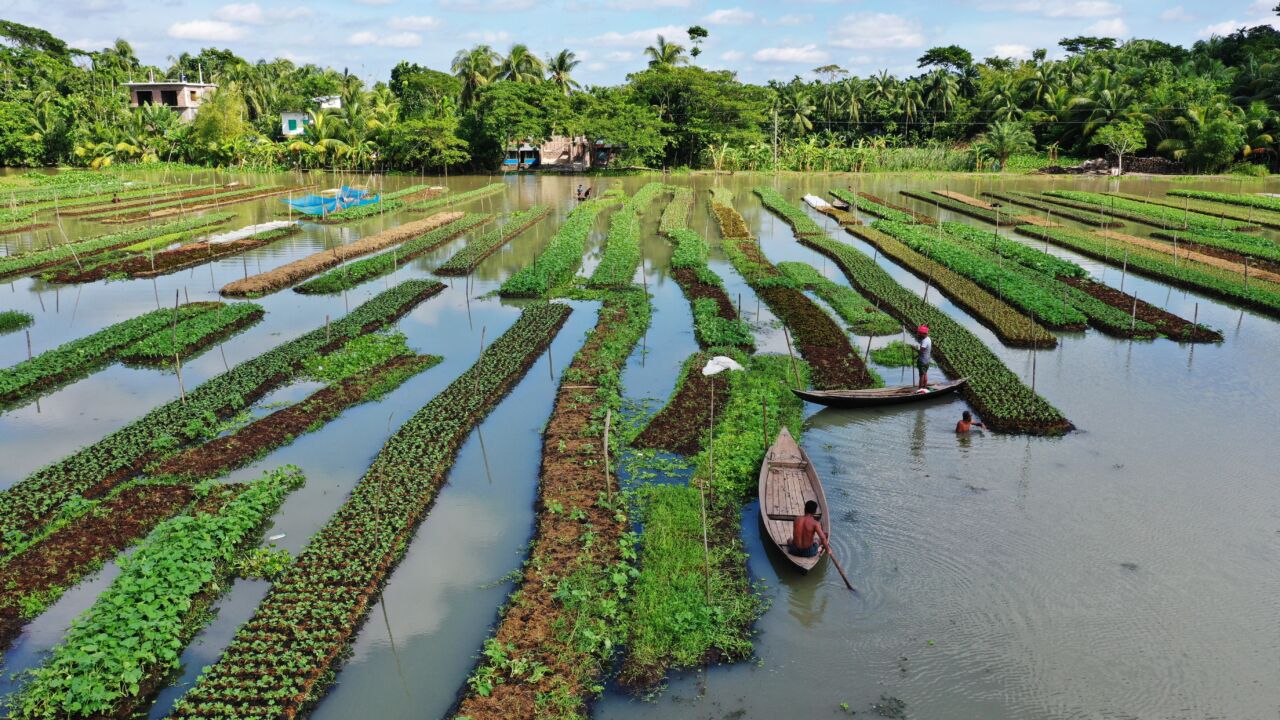
Permaculture principles: an added layer of defence against climate change?
Located in the low-lying delta regions of the Ganges, Brahmaputra and Meghna rivers, Bangladesh is one of the most climate vulnerable countries in the world. Often referred to as ‘ground zero’ for climate change, in 2022 the country saw the worst floods in over a hundred years sweeping through the northeastern region of Sylhet and wiping away towns, livelihoods and farmland.
Adapting to the effects of a warming planet is one of the greatest challenges facing the millions of smallholder farmers in Southeast Asia, who have a difficult road ahead. Climate resilience for these smallholder families will be multifaceted – involving digital technology, new seed types that can cope with weather stressors and soil preservation techniques, to name but a few.
The practice of permaculture, a design science founded in Australia by Bill Mollison and David Holmgren in the 1970s, borrows from indigenous land practices and traditional farming methods, aiming to replicate how healthy ecosystems function, through regenerative methods. This means maintaining healthy, nutrient-rich soils, minimising waste, conserving water and protecting habitats. If we look back at history, we will find many examples of resilient permaculture techniques that helped communities to regenerate and recover from unpredictable events when the technology of today was unthinkable.
One example can be seen in the ‘floating garden’ system invented by the Aztecs, called Chinampas. Chinampas were used by farmers on the Southern side of Mexico, in the Lake Xochimilco region to sustain millions of people, and have recently been revived in Bangladesh.
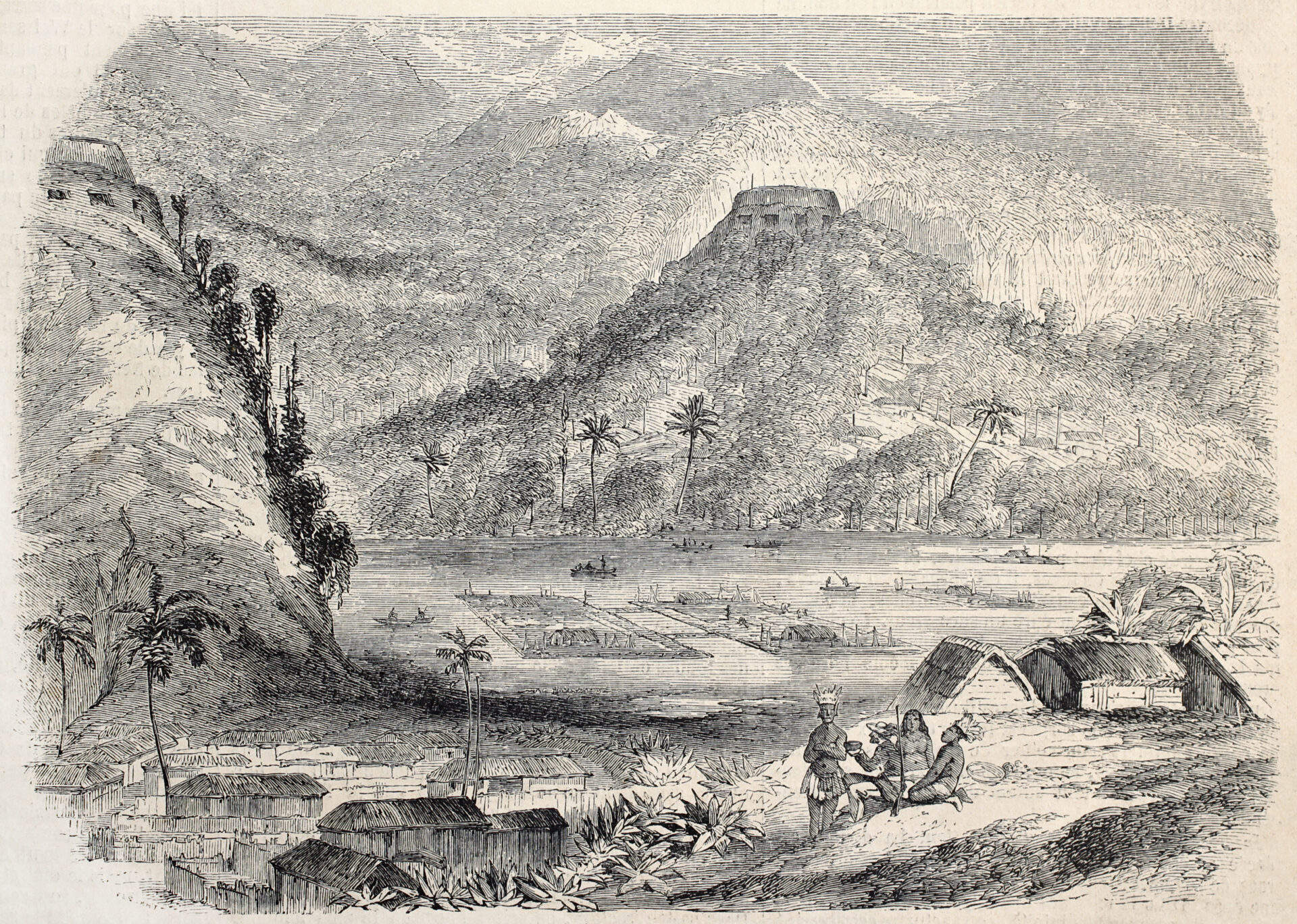
Could applying principles of permaculture to modern farming address climate related challenges facing smallholder farmers today?
The million dollar question facing today’s growers, consumers and agribusinesses is also an existential one – is it possible to feed a growing population both sustainably and at scale, in the face of more unpredictable weather, with minimal damage to the planet and its delicate ecosystems?
Geoff Lawton, a renowned permaculture designer and teacher who was trained by Mollison in the 70s and has educated over 15,000 thousand students throughout his career, believes his design science holds a lot of the answers. Geoff has worked in 50 countries teaching the practical design of sustainable soil, water, plant, animal and energy systems, and has inspired people the world over with his regenerative farming methods.

“Right now, food for many consumers in developed markets comes from the other side of the world. We lose 30% in transport, because we choose not to eat local anymore, and another 30% is wasted once it reaches our plates. Something needs to give, and it’s clear that we need a design science that caters to all of our needs, which is an abundance of clean air, an abundance of water and food while improving the living systems of the planet.”
A revival of chinampas farming systems in Bangladesh is a real-world example of how permaculture principles can help farmers adapt to flooding whilst preserving natural ecosystems
In Bangladesh and many other parts of Southeast Asia, farmers rely on a predictable monsoon season to fill shallow wells and aquifers that will sustain crops for the remainder of the year. When monsoon season becomes unpredictable, and excess water persists for months on end, farmers are forced to change the way they think about their land. Some have turned to ancient techniques invented by the Aztecs to see them through prolonged waterlogging.
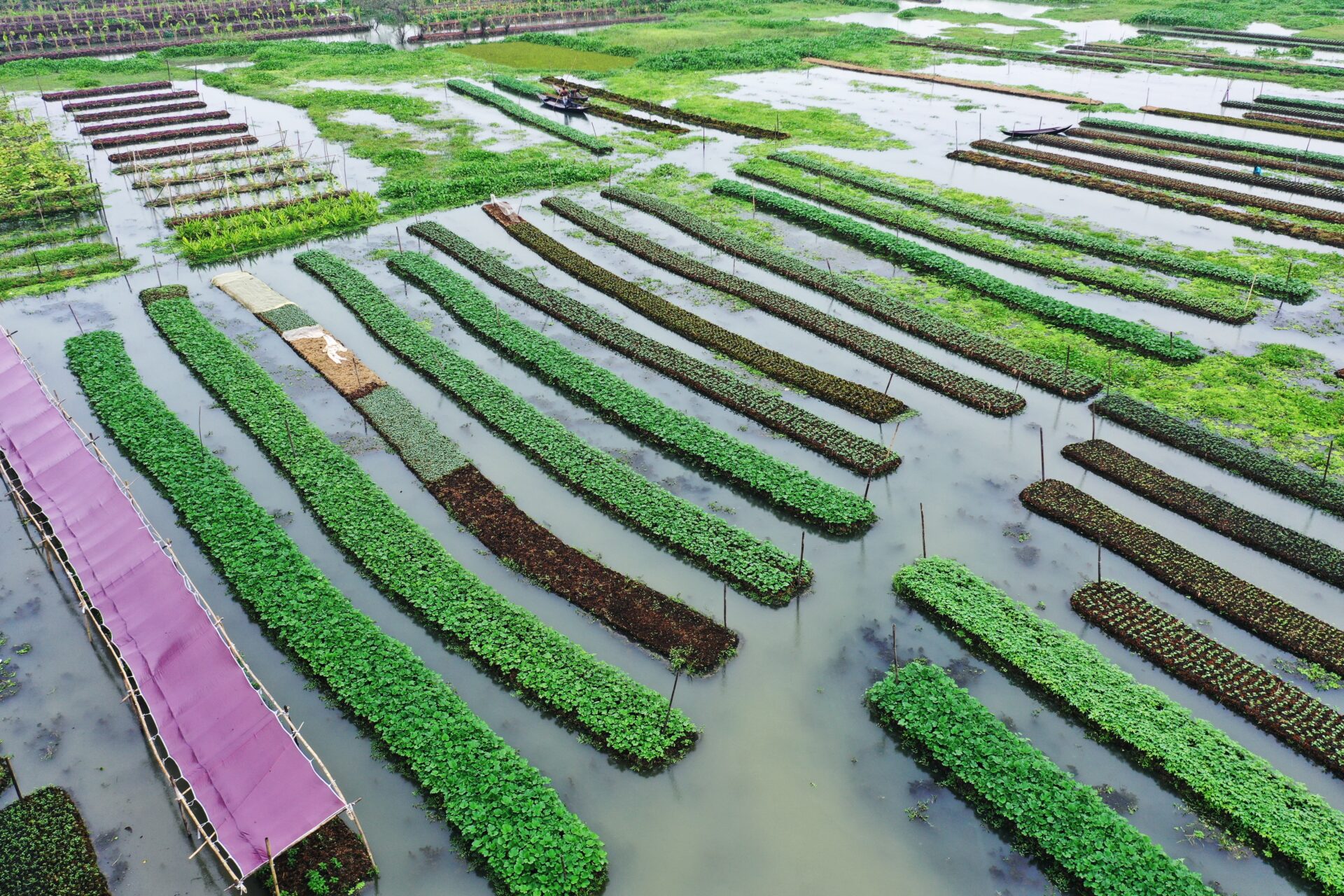
Pirojpur, Bangladesh – October 25, 2022: Bangladeshi Farmers are cultivating various types of vegetables farm on floating beds in the low-lying delta region at Nazirpur in Pirojpur, Bangladesh.
“Mexico City was built on a shallow lake and had chinanpas all the way around it. These floating gardens fed a million people and were created by building on wheat mats until they sank and connected to the land. These systems are present today in Vietnam, Bangladesh and other parts of Southeast Asia, and are absolutely a sustainable way to farm when land is situated close to the banks of a river or on a body of water.” Says Geoff.
Once a chinampa is formed, the crops grown on the surface no longer require irrigation because of the canals that keep the soil hydrated and fertilised. Fish can be introduced to the canals for animal protein and aquatic plants keep these habitats clean.
Chinampas work with natural ecosystems instead of against them
Chinampas combine agriculture and aquaculture and imitate the deltas and tributaries at the mouth of a river, which comprise some of the most productive natural ecosystems on the planet according to Geoff. Working with nature, instead of against it, is foundational to permaculture, and is how indigenous populations have farmed for thousands of years.
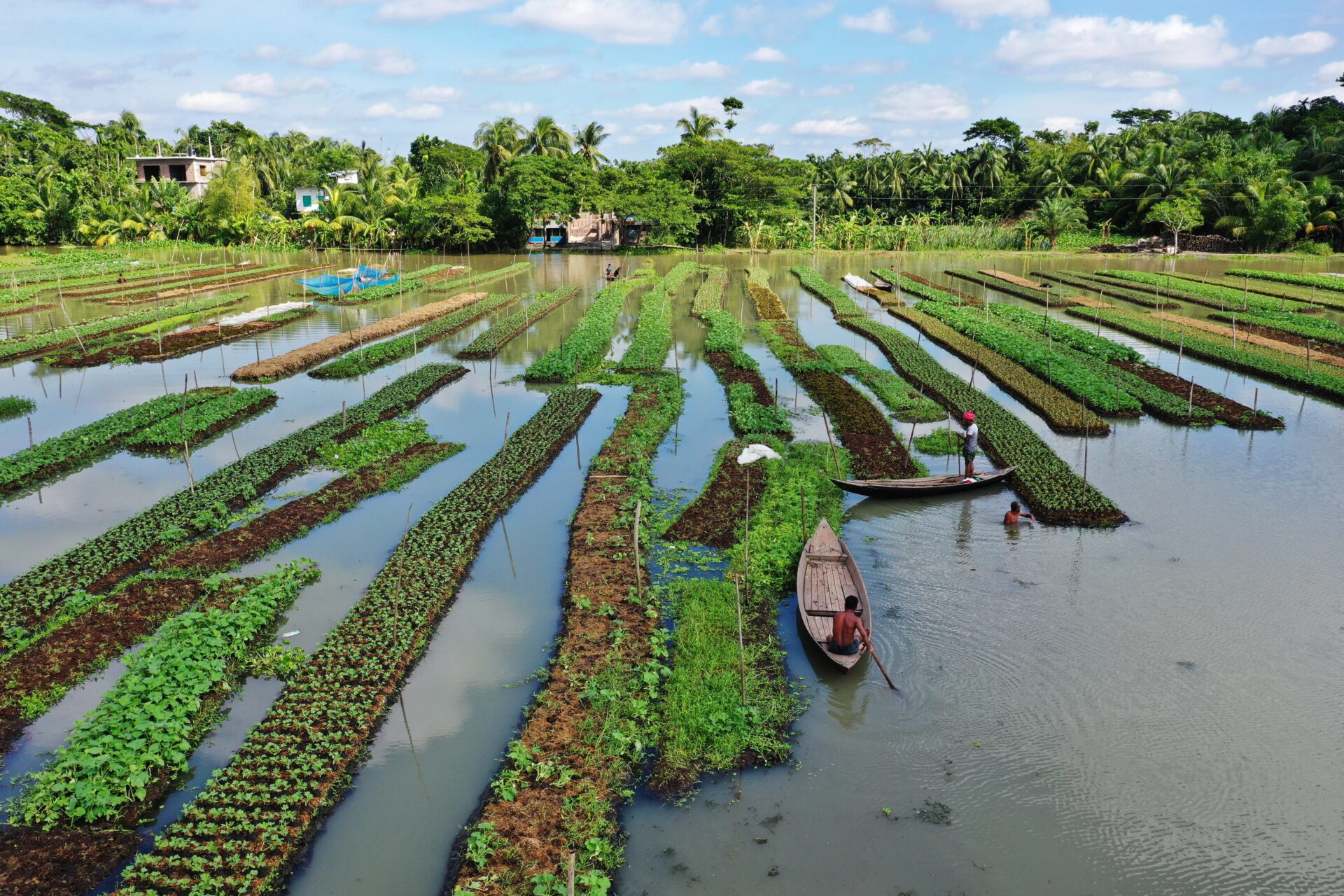
“Chinanpas intensify the land and the water, imitating the extremely productive ‘edge effect’ we see in a lot of natural systems. Deepening water means that fish and aquatic crops can be farmed around the edges, which isn’t just working with nature, but is actually enhancing nature itself.”
Mexico’s chinampas were selected as a Globally Important Agricultural Heritage System (GIAHS) by the United Nation’s Food and Agriculture Organisation (FAO) because of how they both build and preserve biodiversity, whilst helping farmers adapt to climate change and bolstering food security.
Today, nearly 10,000 miles away from Mexico, in Bangladesh’s deltas, farmers in the Southwest can find the most reliable yields through floating farms according to an FAO report. The report found that floating farms were the best method of food production for 60-90% of people in the wetlands, with the gardens offering roughly 40% extra arable land for the cultivation of vegetables such as okra, cucumber, tomatoes, gourds and amaranth.
“There are a number of ancient techniques that have worked really well in history. Now, we have incredible mapping, surveying, and extremely advanced machinery to help us further, which doesn’t have to be destructive.”
Geoff’s YouTube channel is dedicated to sharing his wealth of permaculture knowledge with others, and his twice yearly course is extremely successful, having trained over 15,000 people. He says he hopes to one day become redundant, having created enough teachers to enable to movement to grow without him one day. “I say to all of my students, I want you to be a better teacher than me, a better designer than me and a better consultant than me.”
Watch the video that inspired this article.
The Impact Review Newsletter
Get highlights of the most important news delivered to your email inbox

